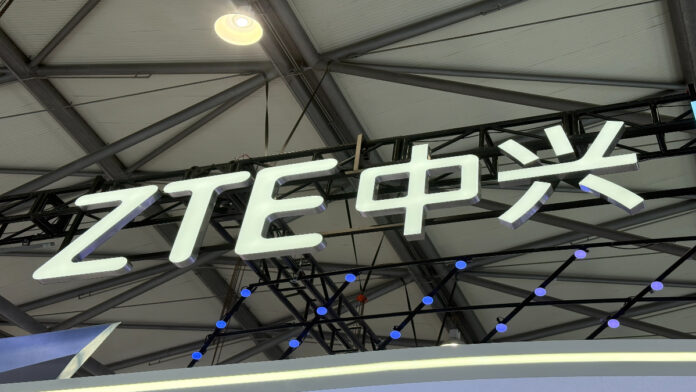To manage the rising power demands of AI, ZTE has integrated a number energy-saving cooling technologies in the new ‘AIDC’ solution
In sum – what to know:
Dual-mode – Each container module handles both general-purpose and AI computing with air or liquid cooling, offering flexibility for mixed workload environments.
Energy efficient – A mix of chilled water cooling, cold plate technology and airflow management delivers a PUE as low as 1.15 in liquid-cooled scenarios.
Faster timelines – Prefabricated modules can be installed 40% faster than traditional builds, helping meet rising demand for computing capacity more quickly.
Chinese vendor ZTE has introduced a new prefabricated AI data center (AIDC) container solution, designed for rising demand for AI computing and rapid infrastructure deployment. Its modular container, launched at Mobile World Congress Shanghai 2025, has a flexible, ‘top-bottom’ frame that supports a floor height of 5.75 meters – breaking past the structural constraints of many existing facilities, it said.
The setup allows each container to house either 8kW air-cooled servers or 40kW liquid-cooled AI computing cabinets. ZTE stated: “With the explosive growth of 5G and AI, the construction of data centers needs to be rapidly implemented and support flexible expansion. Currently, highly prefabricated data centers are gaining popularity, and the modular container solution is evolving from a ‘general computing power + air cooling’ model to an ‘AI Diverse Computing Power + Air-Liquid Hybrid Cooling’ AIDC model.”
It stressed that the ability to run both types of workloads — standard and AI-intensive — makes the solution adaptable for a range of edge and core data center needs.
To manage AI power demands, ZTE claims to have integrated several energy-saving cooling technologies: chilled water wind walls, separation of cold and hot aisles ,and cold plate liquid cooling. These technologies help the system reach a power usage effectiveness (PUE) as low as 1.15 under liquid-cooled setups, making it about 30% more efficient than traditional solutions, it suggested.
The vendor added that the design also supports integration with renewable energy, such as solar panels for additional power.
Since each unit is prefabricated off-site, construction of civil infrastructure can happen in parallel with container assembly. Once delivered to the site, the modules are assembled like building blocks, reducing typical deployment timelines by about 40% from over a year to as little as seven months — says the vendor.
The new AIDC solution aims to address three core challenges in the data center space, said ZTE: the gap between rapidly rising computing needs and slow infrastructure rollouts; compatibility with increasing server density and cooling demands; and pressure to reduce energy use and carbon emissions in line with sustainability goals.”
It stated: “With the official launch of the AIDC prefabricated container solution, ZTE has entered the ‘modular’ era of intelligent computing infrastructure – turning data centers into rapidly replicable and elastic computing power containers.”
Cui Li, the company’s chief developement officer, outlined the vendor’s roadmap for building intelligent infrastructure and accelerating AI adoption across industries during a keynote session at MWC Shanghai. The growing influence of large AI models and the critical role of foundational infrastructure, she said.
“No matter how AI technology evolves in the future, the focus will remain on efficient infrastructure, optimized algorithms and practical applications… Every digital application — including AI — depends on efficient and green infrastructure.”
The ZTE executive also detailed the company’s integrated approach across networks, computing and energy. The Chinese vendor is deploying modular, prefabricated data center units and AI-based power management, which she said reduce energy use and cooling loads by more than 10%. These developments are aimed at delivering flexible, sustainable capacity to meet growing AI demands, the executive said.

